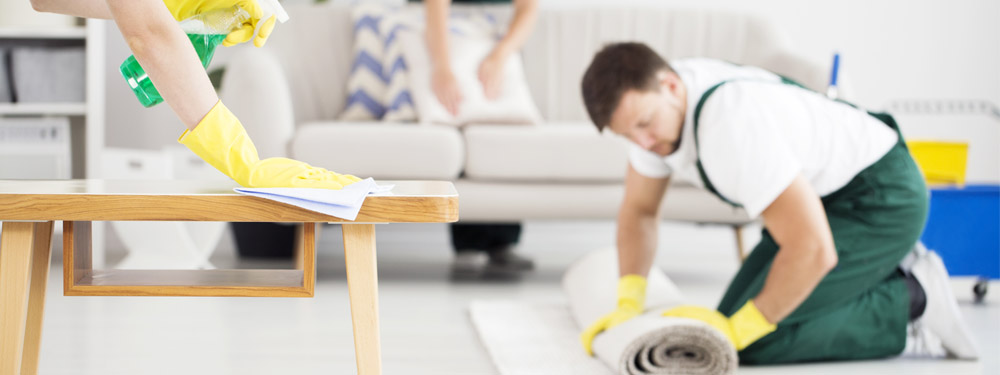When you’re redecorating your home, or even if you just fancy a change by re-organising your furniture, there are certain finishing touches that can add your personality to any room. Everyone wants to add those special personal touches to ensure spending time at home is a pleasure.
So, just how often should we redecorate or re-organise our home? It’s all down to personal choice, of course. There’s such a lot that goes into decorating that it depends how far you want to go. You can repaint and hang new wallpaper, or you can go a step further by choosing new furniture too.
Is there a recommended timescale before you start making changes? Professional interior designers have their own ideas on how often you should undertake a refurbishment. Celia Sawyer, host of the BBC1 show, Your Home in Their Hands, believes in continually updating your home all year round.

© Photographee.eu / Adobe Stock
In particular, she says you should keep on top of the bedroom, because it’s somewhere you can relax, switch off and have a good night’s sleep. Mattress manufacturers recommend that your mattress should be replaced every eight years, as it doesn’t provide the correct support and comfort after this time period.
Sawyer says the key refurbishments are repainting your walls every one to two years, as a quick fix to brighten up the room. Then, take a look around and decide which additional furniture is needed to revamp the room fully.
She suggests buying a stunning mirror as a central piece of furniture, while extra storage space is always useful to house the extra items you accumulate over the years. Unless you have a divan bed, extra cupboards and drawers, or a larger wardrobe, are a bonus.
Andrea Morgan, a certified blogger for Rightmove, recommends bedrooms should be decorated every three or four years, as trends can change quite quickly and you don’t want your room to start looking old-fashioned. She felt most people tended to decorate every four years. Even if they didn’t completely redecorate, they would at least change aspects of a room, including the colour scheme.
Interior designer Carolyn Parker says the piece of furniture that can be most useful is a stool or seat at the end of the bed. As well as being able to sit on it, you can put your duvet on it during the night if you become too hot in bed, or you can also fold extra blankets on top of it, in case you wake up cold during the night.
Get personal!
There are certain things you can do to add those special finishing touches. As well as introducing new items that reflect your personality, in terms of the furniture and colour scheme, include touches that will evoke memories from your past.
For example, decorate in your favourite colours, such as the colour scheme you had at home in your youth, and have matching sheets and quilt covers that will give you a feeling of nostalgia and comfort. Adorn the room with old photos in new frames – it’s the little things that make a big difference.
Lighting
Your choice of lighting can make or break a room. Consider the best way to utilise natural lighting, as gloomy rooms aren’t good for your emotional state. Roof lights, skylights and glass extensions can completely change the ambience of your room. If this isn’t an option, try the modern “daylight bulb”, which will mimic natural light. Rather than producing the usual yellow glow of a traditional lightbulb, it creates a cool, white glow.
There are many different types of lighting as well as the traditional ceiling light, such as bedside lamps, stand-alone floor lamps, pendant lighting that hangs from the ceiling as a feature in its own right, or LED bulbs around your mirror or wardrobe door, for example.
Plants and flowers
Having plants and flowers in your room provides several benefits. Studies have shown that houseplants help clear toxins from the air indoors. Research also shows we spend an average of 80% of our life inside, so anything that reduces the risk of atmospheric pollution is to be welcomed. Houseplants are said to reduce the risk of many medical conditions, including lung diseases and respiratory infections.
Plants reduce the carbon dioxide levels indoors and increase humidity, creating a more comfortable environment. They are also said to reduce stress by promoting feelings of well-being, as being close to plants subconsciously makes us feel more relaxed in our surroundings, according to medical research.
Rugs
Buying a new rug can brighten up a room considerably. If you have laminate floors, a rug will warm up your room in winter, as it blocks colder air from rising up through the floorboards. It also reduces “echo”, making a room feel instantly more homely and comfortable.
It’s also far less noisy when you have a nice, thick rug, particularly if you have children, or a dog, running round playing. A plush rug not only looks cosy, it also creates more comfortable areas, where you can sit or play on the floor.
There are many steps you can take to make your room perfect and it’s not too difficult to add the finishing touches to make your house feel like home.
Both your furniture’s design and quality are important, especially if you’re a landlord who’s refurbishing a rental property.
Furniture Pack Solutions has a wide range of high-quality buy-to-let furniture for rental properties. For further information, please contact us.
